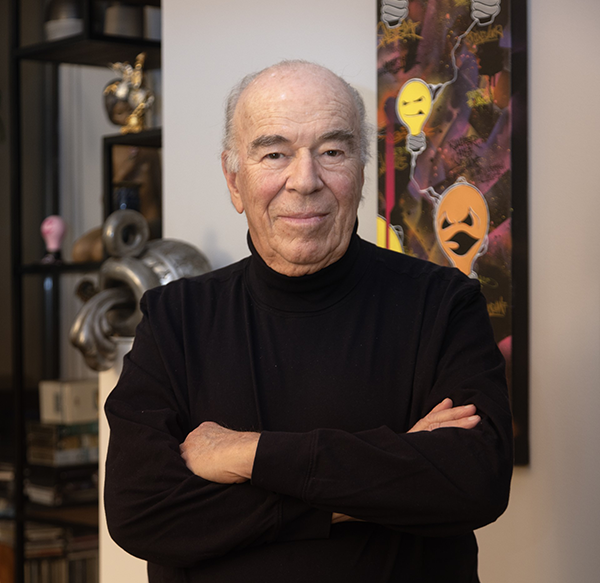Circuit split on constitutionality of legislator-led prayer may lead to SCOTUS review

Shutterstock
The most divisive part of the First Amendment is, arguably, its first 10 words: “Congress shall make no law respecting an establishment of religion.” Author Stephen Mansfield titled a book Ten Tortured Words and Supreme Court Justice Clarence Thomas described church-state jurisprudence as being “in shambles.”
Once again, the great church-state debate appears to be headed to the high court. At issue is the constitutionality of so-called legislator-led prayer before public meetings. With federal appeals courts divided, the justices may soon consider whether local government officials violate the establishment clause when they open meetings with prayers. The answer will depend, in part, on how the justices interpret the clause.
There’s near-unanimous understanding that the establishment clause prevents the government from creating a national church—like the Anglican Church during the time of Henry VIII—and that it prohibits passing laws favoring a particular religious sect. After that, agreement dissipates rapidly.
Some view the clause as erecting a “wall of separation between church and state,” to use the phraseology of Thomas Jefferson and, before him, Rhode Island founder Roger Williams. Those subscribing to a more separationist view quote Justice Hugo Black that this wall of separation “must be kept high and impregnable.” Others believe that religion always has been an important part of the public square and should be treated more favorably than nonreligion because of the establishment clause’s complementary and contradictory religious liberty cohort, the free exercise clause.
The issue of legislator-led prayer is significant and remains commonplace at many local government meetings across the country. “The practice of legislative prayer is still common, and the prayers typically are short Christian prayers,” says Jennifer A. Kreder, a law professor at Northern Kentucky University.
Such prayer practices must not be coercive or discriminatory, says Richard B. Katskee, legal director for Americans United for Separation of Church and State. “If you go to a meeting to petition the commissioners and they themselves tell you to stand and pray with them, disparage your faith, and try to proselytize you to theirs, it’s hard not to think that you’d better go along to get along. That’s highly coercive.”
DIVIDED INTERPRETATIONS
The question of whether such commissioner-led prayers violate the establishment clause has divided the federal appeals courts. In September, the full panel of the 6th U.S. Circuit Court of Appeals at Cincinnati voted 9-6 to uphold the prayer practice at county commission meetings in Jackson County, Michigan, in Bormuth v. County of Jackson. A couple of months earlier, the full panel of the 4th Circuit at Richmond, Virginia, had invalidated a similar practice in Rowan County, North Carolina, in Lund v. Rowan County by a vote of 10-5.
In Bormuth, the 6th Circuit majority reasoned that such prayers were an important part of history and tradition, and a way for public officials to “lend gravity to public business.” Judge Richard Allen Griffin wrote that “history shows that legislator-led prayer is a long-standing tradition.”
The majority reasoned that such official-led prayer is supported by the Supreme Court’s decisions in Marsh v. Chambers (1983) and Town of Greece v. Galloway (2014). In Marsh, the court upheld 6-3 the Nebraska legislature’s custom of having chaplain-led prayer before sessions. In Galloway, the court, voting 5-4, upheld a New York town’s practice of having religious leaders in the community open town meetings with prayer.
However, the 4th Circuit took a much different view in Lund. To the appeals court, it was constitutionally significant that commissioners led the prayers, rather than chaplains or other religious leaders.
Writing for the majority, Judge J. Harvie Wilkinson III explained: “The prayer practice served to identify the government with Christianity and risked conveying to citizens of minority faiths a message of exclusion. And because the commissioners were the exclusive prayer-givers, Rowan County’s invocation practice falls well outside the more inclusive minister-oriented practice of legislative prayer described in Town of Greece.”
“Prayers by legislators raise very different issues in terms of government endorsement of religion,” says constitutional law expert Erwin Chemerinsky, dean at the University of California at Berkeley School of Law and an ABA Journal columnist. “I thus find Judge Wilkinson’s opinion quite persuasive.”
Rowan County already has filed a petition for certiorari to the high court with hopes of restoring the prayer practice. “The circuit split is wide and deep. Furthermore, the issue of legislator-led prayer is frequently recurring and exceedingly important,” says Brett B. Harvey, senior counsel for the Alliance Defending Freedom and co-counsel for Rowan County. “Legislative prayer is a significant way for government officials to signify the gravity and importance of their proceedings.”
Peter Bormuth, who challenged the prayer practice before the Jackson County Board of Commissioners in Michigan, also says he will appeal the 6th Circuit’s decision. “The very strong opinion by the 4th Circuit in Lund certainly gives me hope that the Supreme Court will grant cert in my case,” he says.
Bormuth adamantly objects to the idea that history and tradition support these prayer practices. “Their history and tradition argument is a joke,” he says.
“From colonial times onward, even in the theocratic states of Massachusetts and Virginia, legislators did not lead prayers; ministers did. And most denominations felt that ministers should not hold public office. Several of the original states had laws to such effect, and a few of the newer states also enacted such legislation. For the first 100 years of our United States, it was commonly accepted that having legislators lead opening prayers violated the establishment clause and practice reflected that understanding,” Bormuth says.
This article was published in the February 2018 issue of the ABA Journal with the title "Let Us Pray: Circuit split on constitutionality of legislator-led prayer may lead to Supreme Court review."



